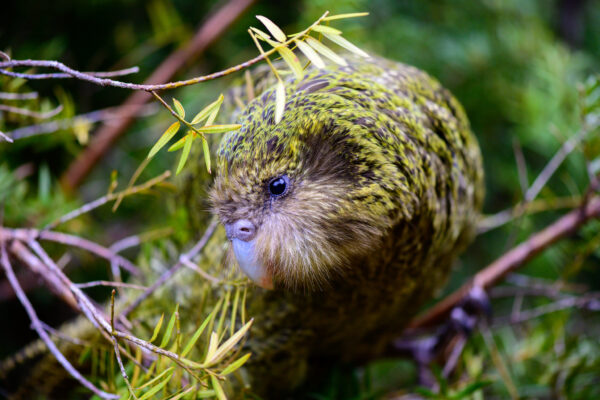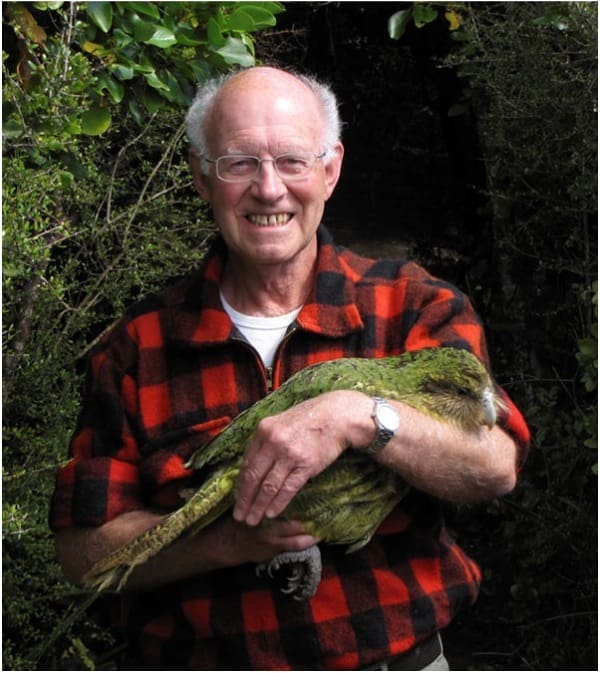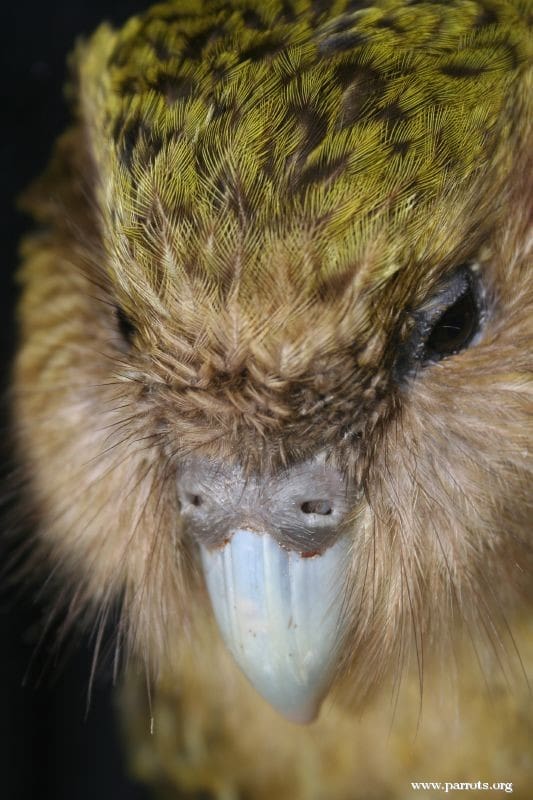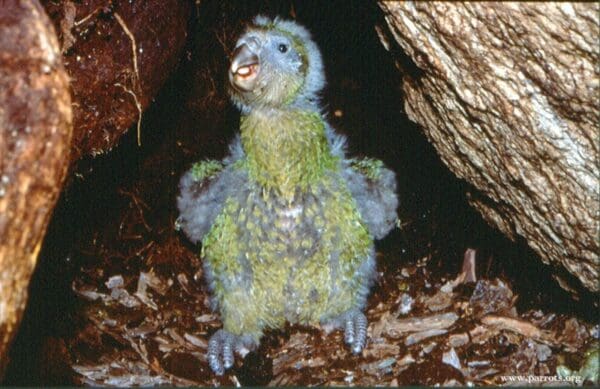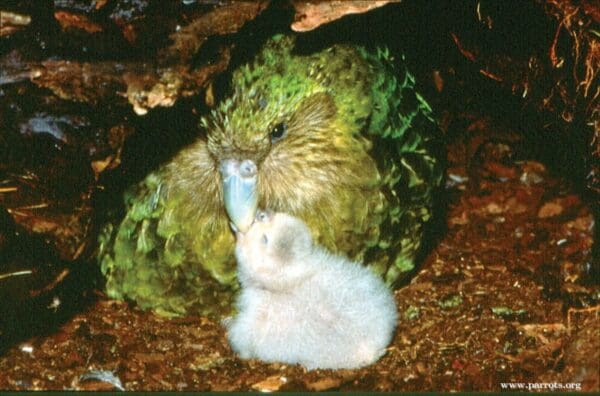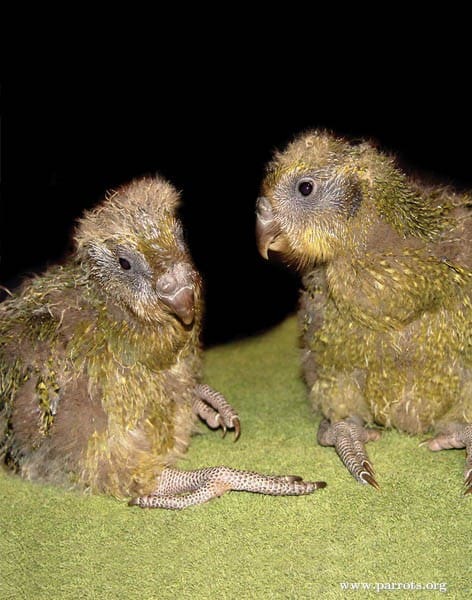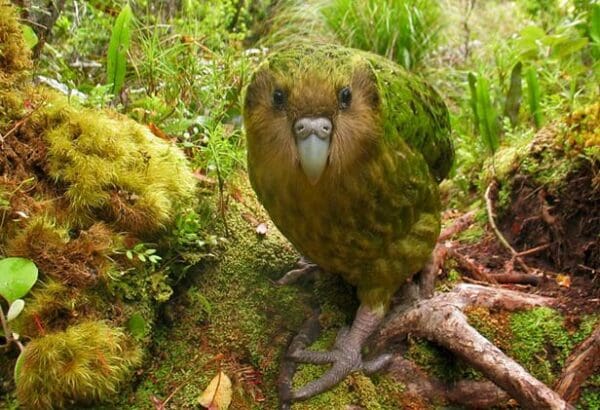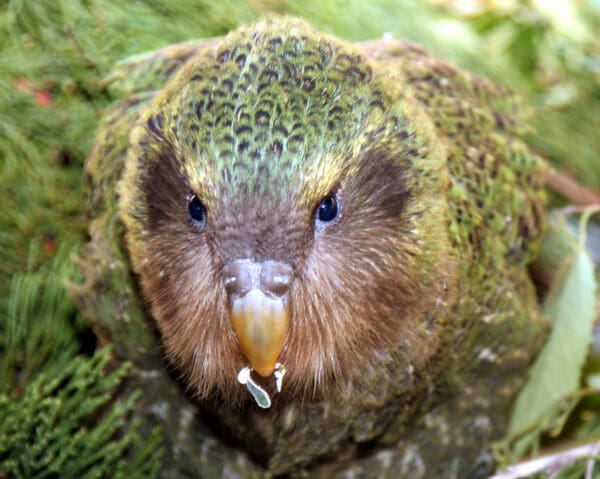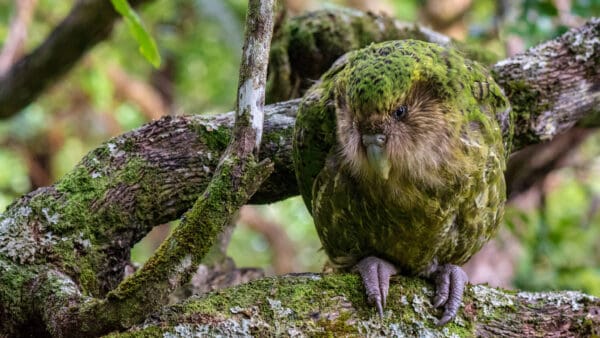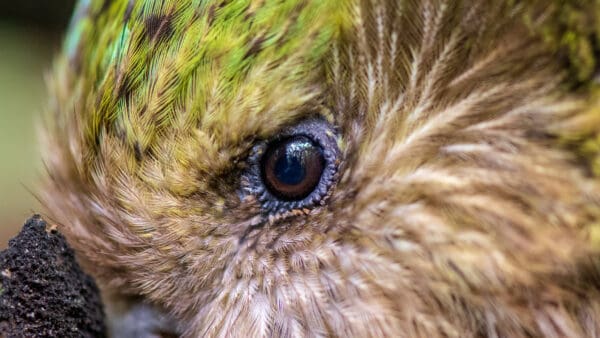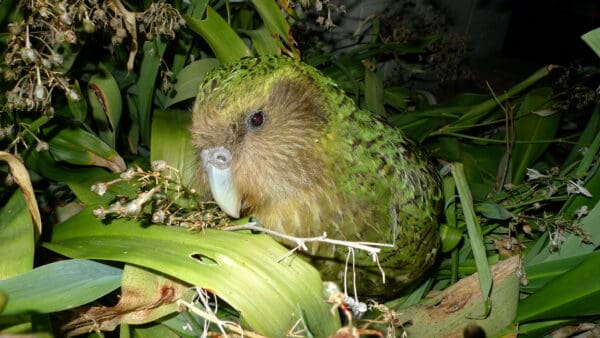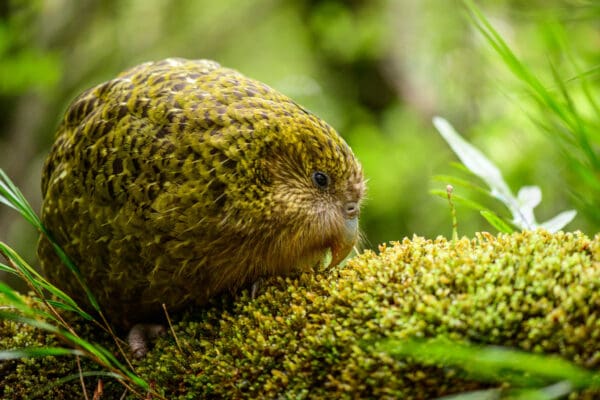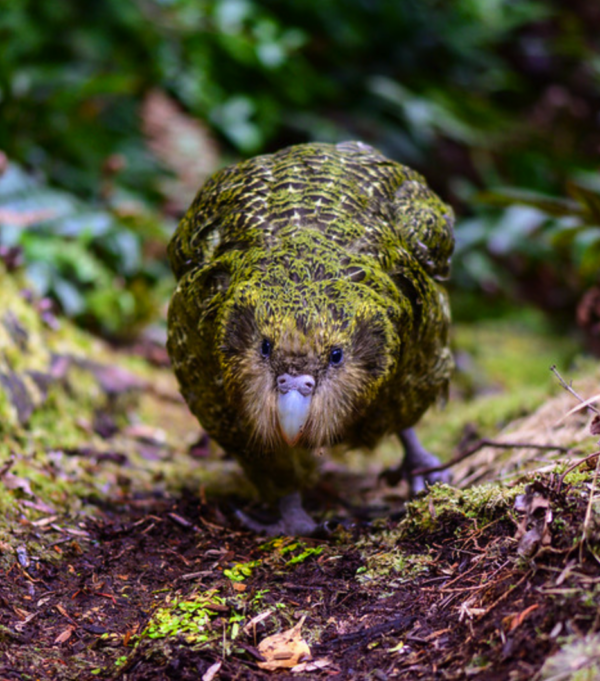Kākāpō
Also known as:
Owl Parrot
Also known as:
Owl Parrot
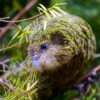
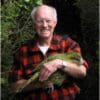
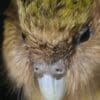
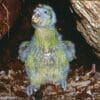
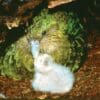
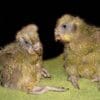
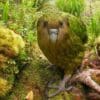
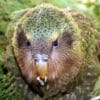
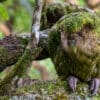

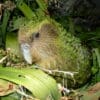
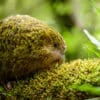
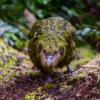
DID YOU KNOW?
At nearly 3 kg the Kākāpō is the heaviest parrot in the world.

Strigops

habroptila
Size:
65 cm (25.3 in)
Weight:
1.5-3.0 kg (52.5-105 oz) males; 950 g-1.6kg (31.6-56 oz) females
Subspecies including nominate:
one
Colour Adult:
Male-upperparts green with irregular barring and mottling to the plumage, colours black, brown and yellow; underparts green/yellow, irregularly barred pale yellow and brown; yellow/brown facial disc; outer primary feathers tipped with yellow; tail green/brown with yellow barring and black flecks. Beak grey tipped pale grey/white; eye dark brown. Female-smaller in size and with a smaller beak; outer primary feathers tipped green/brown.
Colour Juvenile:
As in adult but generally duller in colour; forehead and facial disc less prominent and more brown; outer primary feathers pointed, not rounded tips. Beak /white.
Call:
Wide variety of squeals, shrieks, sounding pig-like; also donkey-like braying. Repetitious bell sounds. Booming by males during mating season (“lek” display) is repeated 15-20 times at intervals of 2 seconds apiece, continued for many hours.
More Information:
Content Sources:
CITES
Avibase
BirdLife International
Kākāpō Recovery
Cornell Lab of Ornithology/Birds of the World
Parrots: A Guide to Parrots of the World, Juniper and Parr, 1998
Research: Growth and fledging of Kākāpō, Farrimond, Elliott and Clout
Parrots: Status Survey and Conservation Plan 2000-2004, Snyder, McGowan, Gilardi and Grajal, 2000.
Parrots of the World, Forshaw and Cooper, 1989. 2010 edition
Parrots of the World, Forshaw, 2006.
Captive Status:
The only birds in captivity are those raised in the Kākāpō Recovery project.
Longevity:
May live 30-50 years and take 8-10 years to reach breeding age.
Housing:
—
Diet:
Birds on Pearl, Whenua Hou and the other islands have been supplemented with freeze-dried or frozen rimu fruits, green walnuts and pine conelets, and a complete pellet.
Enrichment:
—
Nest Box Size:
—
Clutch Size:
2 to 4
Fledging Age:
10-12 weeks.
Hatch Weight:
—
Peak Weight:
—
Weaning Weight:
—
World Population:
244 individuals, slowly increasing.
IUCN Red List Status:
Critically Endangered
CITES Listing:
Appendix I
Threat Summary:
Decline due to habitat degradation and clearance, as well as the introduction of predators such as stoats and cats. Its range contracted substantially following first human (Maori) occupation of New Zealand around 1200 years ago where the birds were hunted as food and to make clothing. European settlement caused the species’ catastrophic decline. Has been intensively managed to ensure its survival and will continue to require help.
Range:
Restricted (translocated) to Maud, Inner Chetwode, Pearl and Codfish Islands, New Zealand.
Habitat:
Ground dweller of forest substrate and low scrubland. Formerly from sea-level to 1200 m (3936 ft).
Wild Diet:
Feed on fruits, berries, nuts, seeds, green shoots, leaf buds, roots, rhizomes, tubers, bark, stems, moss and fungi. Some main food items include Blechnum fern fronds, Dracophyllum, Gahnia and Astelia, plus Lycopodium, Schizaea, Cyathodes, Olearia, Thelymitra, Oreobolus and Carex. Also important is fruit of Fuchsia, Agathis australis leaves as well as fruits and leaves of rimu Dacrydium cupressinum.
Ecology and Behaviour:
Are lek breeders-males clear track and bowl systems where small bowl shaped areas are linked by pathways, often up on ridges where sound will carry. From there, at night, the booming sounds of the males carry far and wide to attract females. Booming may be stimulated by an abundance of pollen early in summer, indicating that sufficient food will be available for families. Normally solitary outside breeding season.
Clutch and Egg Size:
2 to 4 ovoid eggs, more pointed at one end, 50.5 x 36.5 mm (2 x 1.4 in).
Breeding Season:
December-February. Nest is mossy burrow in rock crevice.
